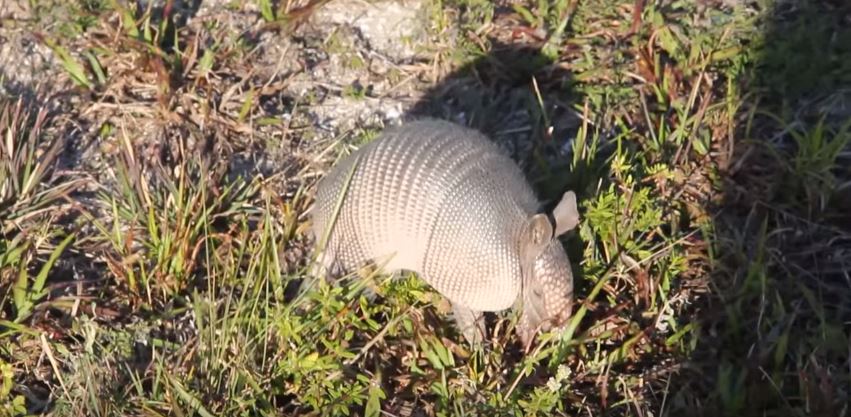Are armadillos dangerous to cats, dogs, or other pets?
It was reported only recently how armadillos have spread leprosy around Florida. This is very alarming considering that many households have pets that interact with this type of mammal. Is there really something to be worried about?

Health and safety precautions
Over the years, armadillos are being blamed for the hundreds of people acquiring the leprosy disease. This is because armadillos are prone to Mycobacterium (a leprae bacterium that causes nerve damage among many others). Aside from that, these animals are also potential carriers of rabies, tapeworm and salmonella. If you have small pets around, there is also the risk (on them) getting “attacked” by an armadillo (in more physical sense).
Ancient disease carrier
Leprosy (from armadillos) is also transmissible to humans because the bacterial strains found on both are the same. Not only is leprosy considered a chronic infection, but also quite contagious if neglected. The spread of bacteria is as simple as close contact (droplets from mouth and nose) whether between animals (e.g. armadillo) and humans. In some rare cases, even dogs and cats are not exempted from getting infected.
• Skin damage
• Nerve damage
• Eye damage
• Limbs are also affected
Nevertheless, leprosy takes time to develop into a full-blown disease, at least after 5-20 years(in humans). As for cats and dogs, (according to the findings), those that caught the infection only developed nodules underneath their skin. This is probably due to the bacteria that have been attacking their cells.
The current situation
Because many wild animals (such as armadillos) are now seen in the villages, the spread of harmful illnesses to pets as well as humans is unavoidable--- Unless the majority of homeowners would do something about it. If for some reasons you are now afraid to come close to one, good thing, there are wildlife professionals who are ready to assist you.
• Survey the surrounding for signs of armadillos
• Look for the tracks and burrows where they usually hide
• For baby armadillos (that were abandoned), the most appropriate action is to turn them over to the wildlife shelter.
• Get rid of an armadillo right away (study your options)
• Use a trap or call an expert to help you with everything
• Build fences all around it to stop the armadillos from coming in
• If a vehicle hits an armadillo, the least thing you could do is to apply “first aid” before taking it to the veterinarian
• Never keep an armadillo as a pet
Are armadillos dangerous to cats, dogs, or other pets?
ARMADILLO CONTROL: We specialize in armadillo control projects. Call us now for armadillo control in your city or town.
Go back to the
How to get rid of armadillos page to learn more about Are armadillos dangerous to cats, dogs, or other pets?
To find out our prices for armadillo control, visit our
armadillo removal prices page.


